Ways AI Enhances Proactive Customer Support in 2025
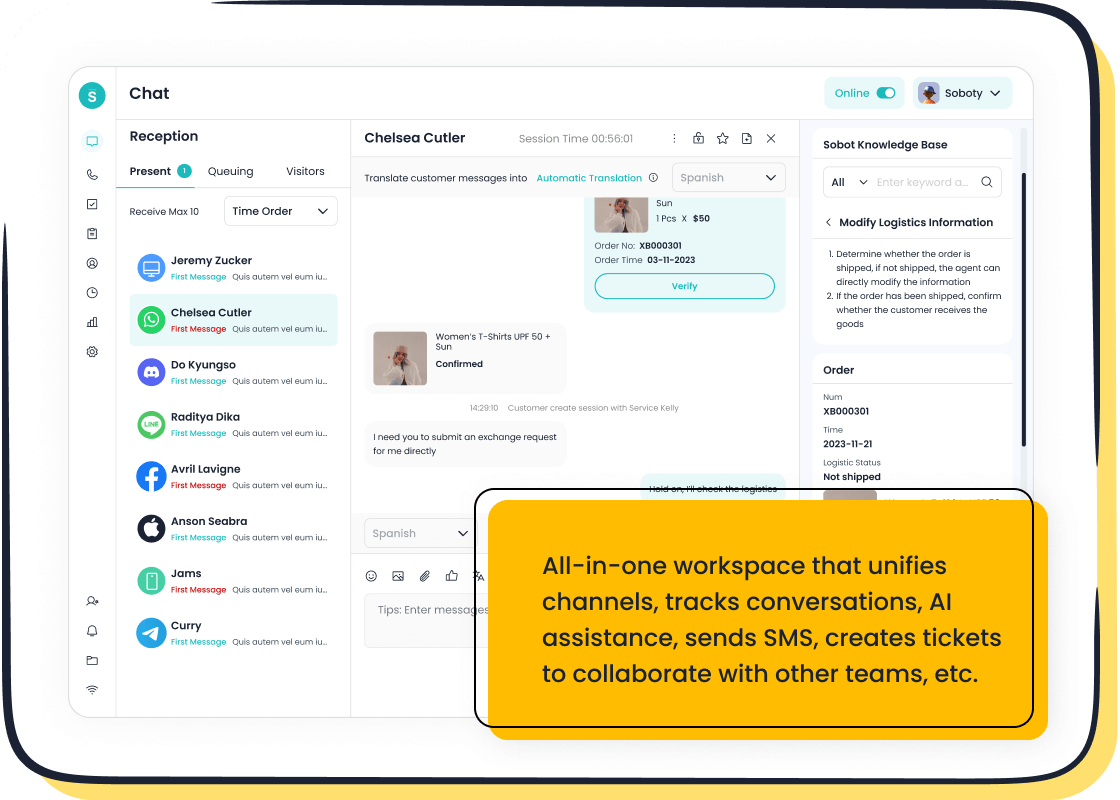
Artificial intelligence (AI) is revolutionizing how businesses deliver customer service. By 2025, AI's ability to anticipate customer needs will redefine proactive customer service. Nearly half of all client support units have already adopted AI, with further investments underway. Conversational AI has gained traction, with 52% of contact centers investing in it to enhance customer satisfaction. Companies like Sobot are leading this transformation by offering tools that unify communication channels and automate responses. This shift reflects the optimism of over 52.4% of Americans who believe AI will improve customer experiences. As businesses embrace these advancements, AI will help reduce costs while creating seamless interactions.
Overcoming Challenges in Proactive Customer Service
Reactive vs. Proactive Approaches in Customer Support
Reactive customer service often addresses issues after they arise, leaving customers frustrated and dissatisfied. Proactive support, on the other hand, anticipates customer needs before problems occur. You can see the difference in how data is used. Reactive methods rely on complaints, warranty claims, and surveys to document past experiences. Proactive strategies use focus groups, market analysis, and benchmarking to plan ahead and avoid negative interactions.
| Data Type | Customer Experience | Sources | Uses | Strengths | Weaknesses |
|---|---|---|---|---|---|
| Reactive | After | Complaints, product returns, sales figures | Documentation of customer experience | Easy to obtain and directly related to a customer’s experience | Bad experiences have already occurred |
| Proactive | Before | Focus groups, surveys, market analysis | Planning for new products and services | Precedes customer interaction and avoids bad experiences | More expensive to collect |
Proactive customer service delivers higher ROI, reduces churn, and improves customer satisfaction. For example, proactive strategies can reduce support tickets by 27% and decrease resolution time by 14%, according to Zendesk.
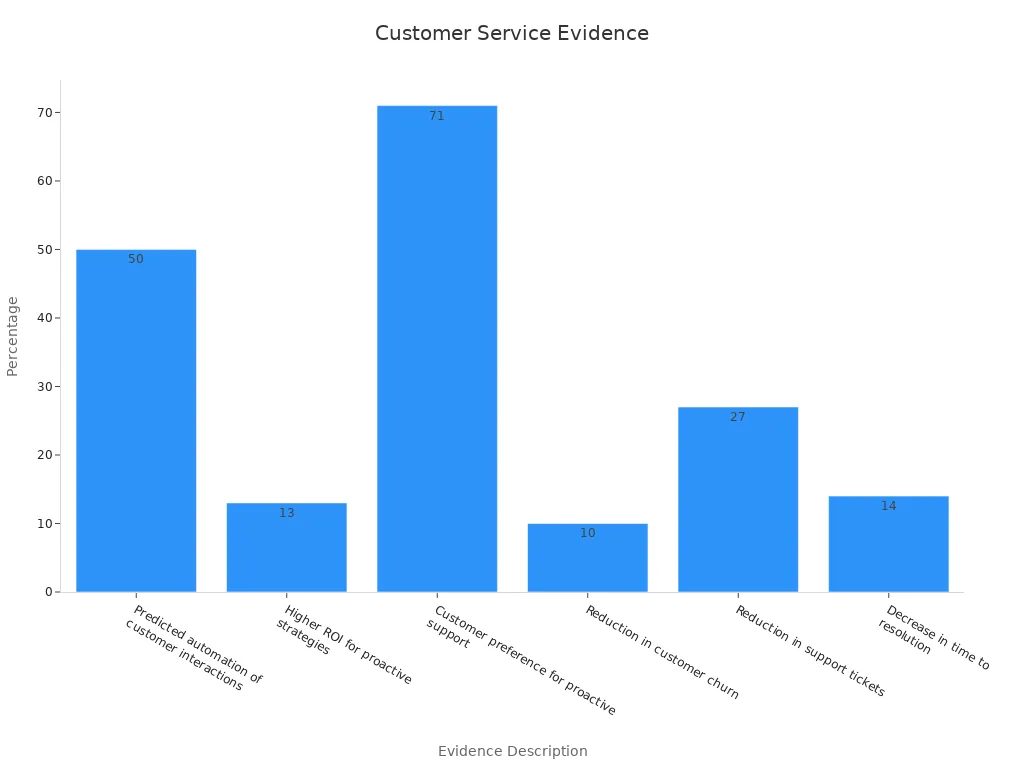
Addressing Common Pain Points in Traditional Customer Service
Traditional customer service often struggles with inefficiencies like redundant processes and unresponsive teams. These pain points frustrate customers and lower satisfaction. You can address these challenges with automation and self-service options. For example, chatbots can handle repetitive inquiries, freeing agents to focus on complex issues. Offering custom plans and reference materials can also reduce budget constraints and steep learning curves.
| Customer Pain Point | Example Solution |
|---|---|
| Budget Constraints | Offer a custom plan option where customers can select features they need, making premium features attainable. |
| Unresponsive Support Team | Implement productivity best practices, use chatbots, and create a help desk to improve response times. |
| Steep Learning Curve | Provide reference materials, demos, and coaching sessions to facilitate quicker onboarding. |
| Redundant Processes | Review and streamline processes to reduce unnecessary steps and improve productivity. |
| Product Shortcomings | Gather customer feedback through surveys to identify and address product limitations. |
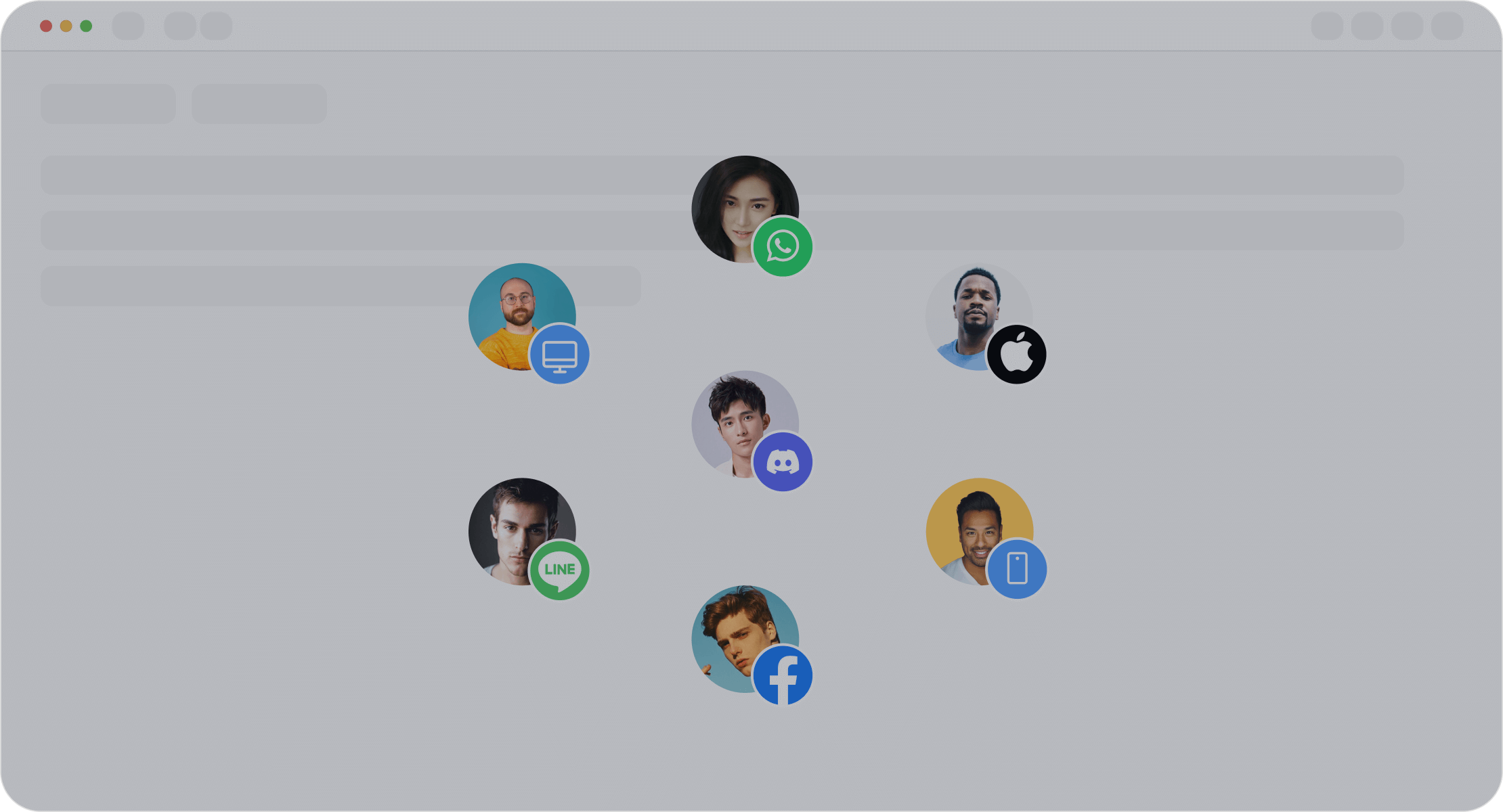
Sobot’s AI-powered solutions, such as Live Chat, help businesses overcome these pain points. By unifying communication channels and automating workflows, Sobot improves customer engagement and satisfaction.
The Role of AI in Predicting and Personalizing Customer Needs
AI plays a critical role in anticipating customer needs and delivering personalized experiences. For example, Nike’s mobile app uses AI to analyze behavior patterns and past interactions, leading to a 30% increase in direct-to-consumer sales. AI systems also reduce average handling time by up to 12%, improving efficiency in managing inquiries.
Sobot’s AI solutions leverage machine learning to predict customer behavior and personalize interactions. With tools like Sobot Live Chat, you can segment customers, automate workflows, and provide tailored self-service options. These features enhance customer satisfaction and streamline operations. AI-driven personalization increases satisfaction by 20%, often correlating with higher sales.
Key Ways AI Enhances Proactive Customer Service
Predictive Analytics for Anticipating Customer Behavior
Predictive analytics allows you to anticipate customer needs by analyzing historical data and behavior patterns. For example, in retail, AI can identify when customers are likely to run out of a product and send timely reminders for replenishment. This approach not only boosts revenue through upselling but also enhances customer satisfaction by meeting needs proactively.
In the telecom industry, predictive analytics identifies customers at risk of leaving by analyzing their purchase frequency and complaints. This insight enables you to take timely retention actions, preserving revenue and reducing acquisition costs. Similarly, call centers use predictive analytics to forecast interaction volumes, ensuring optimal staffing during peak times. This minimizes inefficiencies and improves the overall customer experience.
| Industry Application | Description | Key Benefit |
|---|---|---|
| Retail | Analyzes purchase data to anticipate customer needs, like product reminders | Increases revenue through upselling and cross-selling |
| Telecom | Identifies customers at risk of churn for timely retention efforts | Preserves revenue and lowers acquisition costs |
| Call Centers | Forecasts interaction volumes to optimize staffing | Minimizes inefficiencies and enhances customer experience |
| Financial Services | Detects fraudulent transactions through pattern analysis | Mitigates financial losses and secures customer accounts |
| IT Service Desks | Categorizes inquiries for efficient ticket handling | Reduces response times and improves resolution rates |
| Automotive | Analyzes feedback to identify recurring product issues | Enhances customer satisfaction and reduces reputational risks |
Sobot’s AI-powered solutions, such as its omnichannel platform, leverage predictive analytics to help you anticipate customer needs. By integrating data from multiple channels, Sobot enables you to deliver proactive support and personalized interactions, improving customer engagement and loyalty.
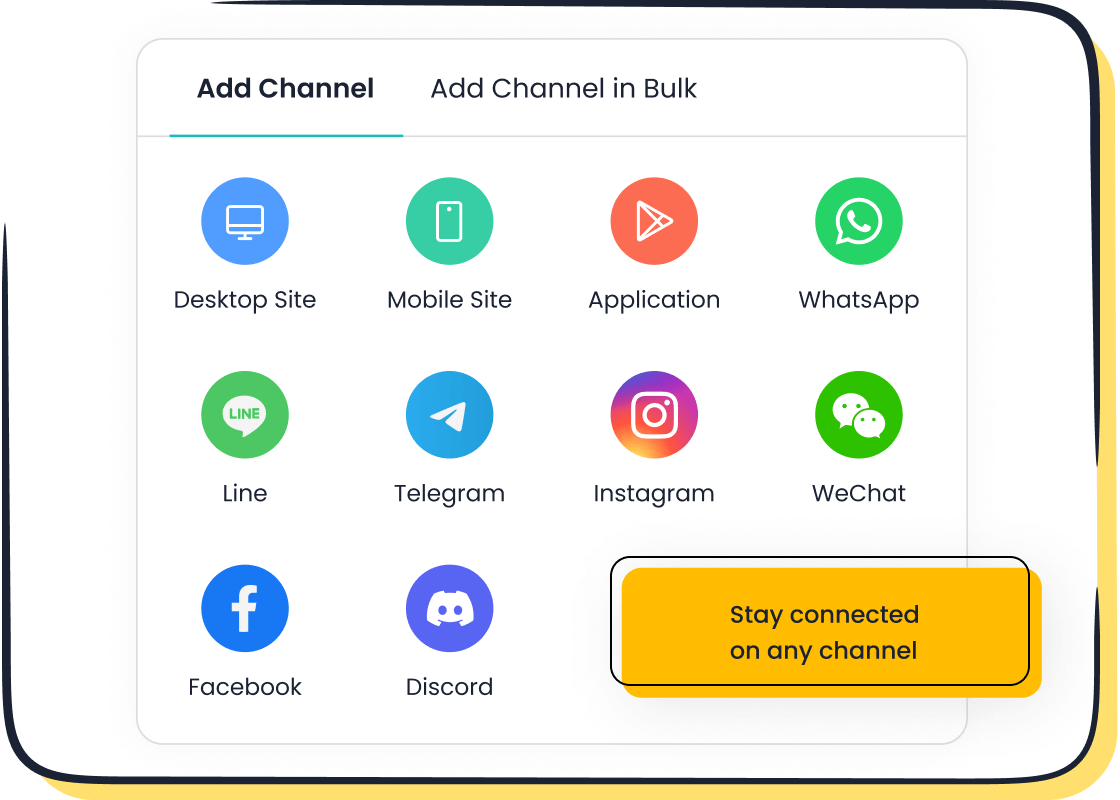
Real-Time Assistance with AI-Powered Tools like Sobot Live Chat
Real-time assistance is a game-changer in customer service. Tools like Sobot Live Chat empower you to respond to customer inquiries instantly, reducing wait times and improving satisfaction. With omnichannel support, Sobot Live Chat ensures you never miss a conversation, whether it’s on your website, app, or social media platforms like WhatsApp and Instagram.
AI-powered automation in Sobot Live Chat enhances contact center efficiency by streamlining workflows. For instance, the platform uses intelligent assignment to route inquiries to the right agents, ensuring faster resolutions. Built-in analytics evaluate over 150 indicators, helping you optimize your service and make data-driven decisions.
| Metric | Good Performance | Better Performance | Industry Reality |
|---|---|---|---|
| 12 hours or less | 4 hours or less | 12 hours | |
| Social Media | 5 hours or less | 2 hours or less | 1 hour for urgent issues |
| Live Chat | 1 minute or less | 40 seconds or less | 40 seconds (AI-enabled) |
| Phone Support | 80% answered within 20s | N/A | N/A |
Sobot Live Chat also fosters personalized customer experiences by using AI to segment customers and tailor interactions. This not only enhances personalization but also boosts conversion rates by 38%, turning visitors into loyal customers.
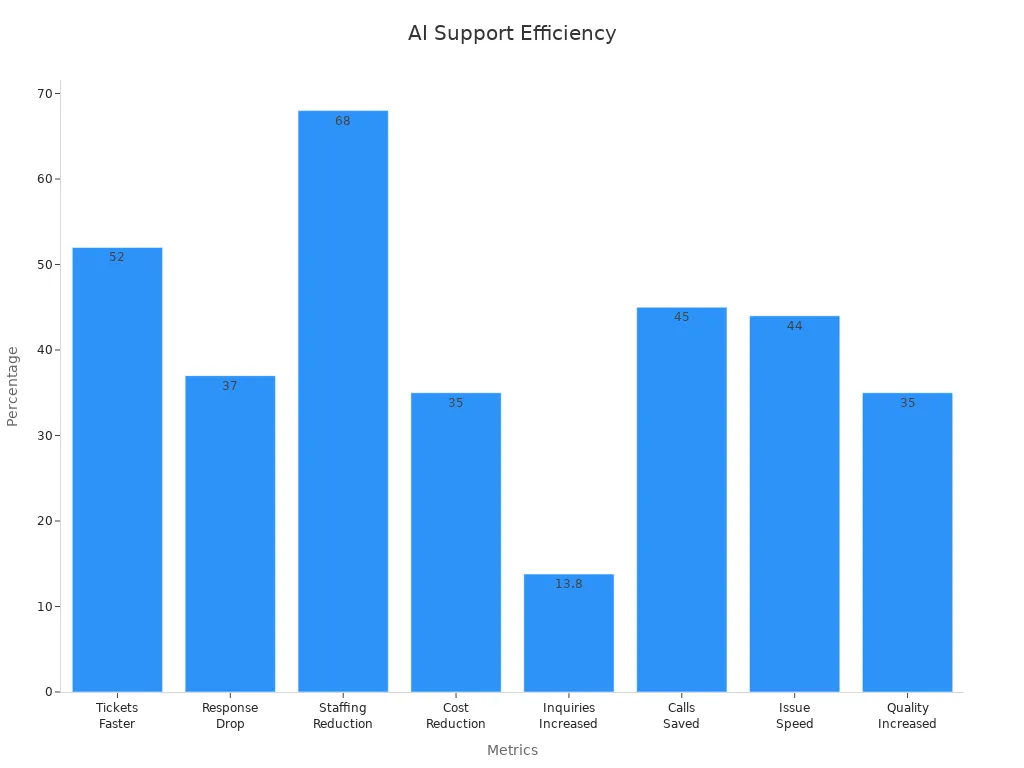
Personalized Customer Interactions Through Machine Learning
Machine learning enables you to deliver personalized customer experiences by analyzing data and adapting to individual preferences. For example, AI can recommend products based on browsing history or tailor responses to match a customer’s tone and style. This level of personalization increases satisfaction and fosters loyalty.
Sobot’s AI-driven automation takes customer personalization to the next level. The platform uses machine learning to analyze customer interactions and provide tailored solutions. For instance, Sobot Live Chat offers features like auto-translation for seamless communication and satisfaction surveys to measure service quality. These tools ensure every interaction feels unique and meaningful.
Companies like Pelago have successfully used AI to enhance personalization. By deploying generative AI-powered conversational agents, Pelago onboarded over 5,000 users in just six weeks, achieving a 50% deflection rate. This demonstrates how AI can transform customer engagement and streamline operations.
| Company | AI Implementation Details | Outcomes |
|---|---|---|
| Slack | Open-ended questions and microsurveys for user feedback | Collects nuanced insights, enabling proactive issue resolution and tailored support. |
| Extensive knowledge base for self-service options | Reduces direct support inquiries and enhances user autonomy. | |
| Lion Parcel | 85% automation powered by Generative AI | Elevates customer service efficiency. |
| Hyundai | AI automation leading to ~1000 car sales and a 10% retail conversion rate | Significant increase in sales and user engagement. |
| Pelago | Generative AI powered conversational agents onboarding over 5,000 users in six weeks | Achieved a 50% deflection rate, improving customer experience. |
By integrating machine learning into your customer service strategy, you can anticipate customer needs, enhance personalization, and deliver proactive support that exceeds expectations.
Automation in Issue Resolution and Escalation Management
Automation transforms how you manage issue resolution and escalation in customer service. AI-powered automation identifies problems quickly and routes them to the right teams or systems for resolution. This reduces delays and ensures customers receive timely support. For example, automated workflows can handle repetitive tasks like ticket categorization, freeing agents to focus on complex issues.
AI excels at prioritizing urgent matters. It analyzes customer interactions to detect patterns and flags critical cases for immediate attention. In healthcare, automated escalation systems alert physicians about critical lab results, enabling timely interventions and improving patient outcomes. Similarly, financial institutions use AI to escalate fraud detection cases, enhancing security and operational efficiency.
| Industry | Case Example | Impact |
|---|---|---|
| Financial Institutions | Automated escalation in fraud detection systems | Improved security and operational efficiency in handling suspicious transactions. |
| Healthcare | Automated escalation of critical lab results | Timely interventions and better patient outcomes through immediate alerts to physicians. |
| Security Operations Centers | SOAR platforms for threat detection | Enhanced threat response and resource optimization by prioritizing high-risk incidents. |
Sobot’s AI-powered solutions streamline issue resolution and escalation management. Tools like Sobot Live Chat use intelligent assignment to route inquiries to the right agents. This ensures faster resolutions and boosts customer satisfaction. Built-in analytics evaluate over 150 indicators, helping you optimize workflows and anticipate customer needs.
AI-powered automation also improves proactive customer service. It predicts potential issues based on historical data and customer behavior. For example, in retail, AI can identify when customers are likely to face product shortages and send reminders for replenishment. This proactive support enhances customer engagement and loyalty.
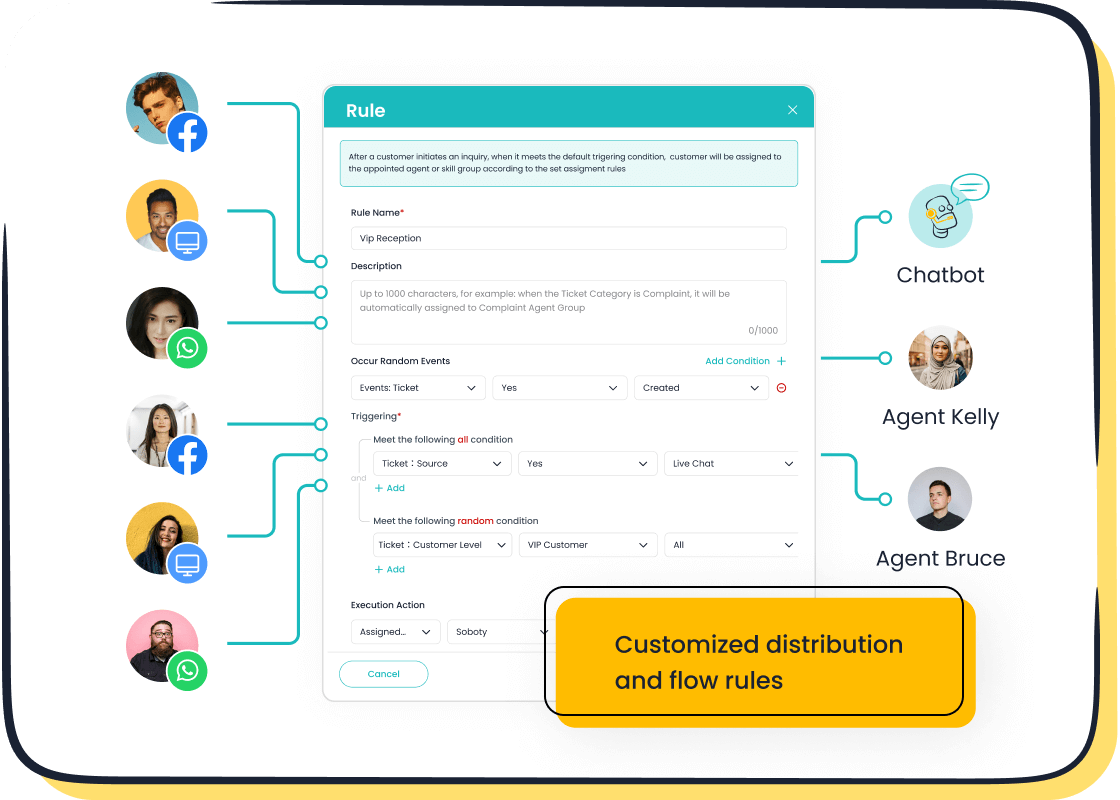
Self-service options powered by AI further simplify issue resolution. Chatbots handle common inquiries, allowing customers to resolve problems independently. This reduces wait times and improves customer experience. Sobot’s chatbot system, integrated with its Live Chat platform, provides 24/7 support, ensuring no interaction goes unanswered.
By leveraging AI-powered automation, you can anticipate customer needs, streamline operations, and deliver proactive support. This approach not only improves customer satisfaction but also reduces costs and enhances efficiency.
Emerging AI Technologies Shaping Customer Experience in 2025
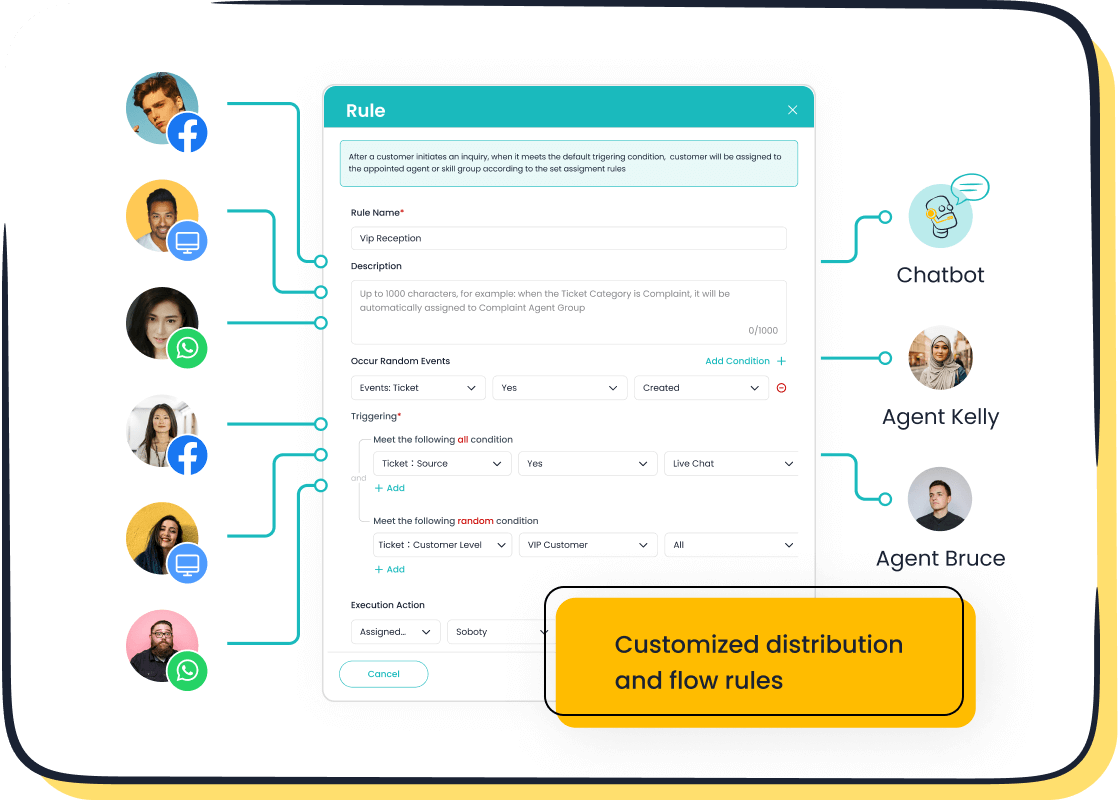
AI-Driven Sentiment Analysis for Enhanced Customer Insights
AI-driven sentiment analysis helps you understand how customers feel during interactions. By analyzing text, voice, and even facial expressions, AI identifies emotions like frustration, satisfaction, or confusion. This insight allows you to adjust your approach in real time, improving customer satisfaction and loyalty.
For example, in contact centers, AI monitors sentiment during calls and escalates issues when it detects negative emotions. This proactive strategy reduces churn and enhances customer engagement. Emotional AI, projected to reach a market value of $91.67 billion by 2025, can increase customer satisfaction by up to 50%. In e-commerce, AI chatbots recognize frustration in customer messages and escalate complex inquiries to human agents, ensuring timely resolutions.
Sobot’s AI solutions integrate sentiment analysis to anticipate customer needs. Tools like Sobot Live Chat use sentiment data to personalize interactions, helping you deliver proactive customer service that exceeds expectations.
| Trend | Key Statistics | Use Cases and Applications |
|---|---|---|
| AI-Driven Emotional Intelligence | - Emotional AI market projected to reach $91.67 billion by 2025. | - Contact Centers: AI monitors sentiment and escalates issues as needed. |
| - AI can increase customer satisfaction by 40-50%. | - Healthcare: AI assesses emotional states during consultations. | |
| - E-commerce: AI chatbots recognize customer frustration and escalate issues. |
Conversational AI and Voice Recognition in Customer Support
Conversational AI and voice recognition are transforming customer service by enabling natural, human-like interactions. These technologies allow you to resolve inquiries faster, reduce operational costs, and improve customer satisfaction.
Voice recognition systems analyze speech patterns to detect stress or urgency, ensuring critical issues receive immediate attention. For example, call centers use AI-powered voice analytics to reduce average handle time (AHT) by 60%, while sales teams analyze successful language patterns to improve conversion rates. Conversational AI, expected to handle 70% of customer interactions by 2025, autonomously manages complex inquiries, freeing agents to focus on high-value tasks.
Sobot’s AI-powered tools, such as its chatbot system, leverage conversational AI to deliver seamless support across channels. With features like real-time speech recognition and intelligent routing, Sobot ensures every interaction feels natural and efficient.
| Metric | Description |
|---|---|
| First Call Resolution (FCR) | Measures the ability to resolve customer issues during the initial interaction. |
| Reduced Average Handle Time | Tracks the duration of customer interactions; shorter times indicate improved efficiency. |
| Bot Accuracy | Assesses the accuracy of the voice agent in understanding and responding to customer inquiries. |
| Increased Customer Satisfaction | Evaluates user satisfaction with interactions via surveys, feedback, or sentiment analysis. |
Advanced Customer Data Platforms (CDPs) for Unified Insights
Advanced Customer Data Platforms (CDPs) unify customer data from multiple sources, giving you a 360-degree view of customer behavior. This unified approach helps you anticipate customer needs, personalize interactions, and enhance customer experience.
CDPs enable advanced segmentation strategies, leading to a 10% increase in customer engagement and a 20% rise in sales conversion rates. Tailored marketing campaigns based on segmentation boost customer loyalty by 45%. Businesses using CDPs also experience a 25% increase in marketing effectiveness and a 15% reduction in churn rates.
Sobot’s AI solutions integrate seamlessly with CDPs to provide unified insights. By combining data from various channels, Sobot helps you optimize customer service and deliver proactive support. This approach not only improves customer satisfaction but also drives business growth.
| Source | Finding |
|---|---|
| Gartner | Organizations can achieve up to 360% higher customer retention rates with a unified data approach. |
| McKinsey | Advanced segmentation strategies lead to a 10% increase in customer engagement and a 20% rise in sales conversion rates. |
| Salesforce | Tailored marketing campaigns based on segmentation contribute to a 45% increase in customer loyalty and retention. |
Integration of AI with IoT for Seamless Customer Experiences
The integration of AI with the Internet of Things (IoT) is transforming how you interact with customers. By connecting smart devices with AI-powered systems, businesses can create seamless and personalized experiences. This combination enables you to anticipate customer needs and deliver proactive support that enhances satisfaction.
IoT devices generate vast amounts of data. AI analyzes this data to identify patterns and predict customer behavior. For example, smart home devices like thermostats or refrigerators can notify users when maintenance is required or when supplies are running low. This proactive approach ensures uninterrupted service and builds trust.
In retail, IoT sensors track inventory levels in real time. AI processes this information to alert you about stock shortages or suggest restocking schedules. This reduces delays and ensures customers always find what they need. Similarly, wearable devices in healthcare monitor patient vitals and use AI to send alerts for abnormal readings, enabling timely interventions.
Sobot’s AI solutions integrate seamlessly with IoT to enhance customer engagement. For instance, Sobot Live Chat connects with IoT-enabled platforms to provide real-time support. If a smart device encounters an issue, the system can automatically notify support teams. This ensures quick resolutions and minimizes downtime. Sobot’s built-in analytics also help you optimize these interactions by evaluating over 150 indicators.
The automotive industry offers another example. Connected cars equipped with IoT sensors monitor engine performance and tire pressure. AI analyzes this data to predict potential issues and schedule maintenance. This proactive service reduces breakdowns and improves customer satisfaction.
By combining AI with IoT, you can create a unified ecosystem that enhances customer experiences. This integration not only improves operational efficiency but also fosters loyalty by delivering personalized and timely support.
Tip: To maximize the benefits of AI and IoT integration, ensure your systems are secure and compliant with data protection regulations.
Real-World Applications of AI in Proactive Customer Service
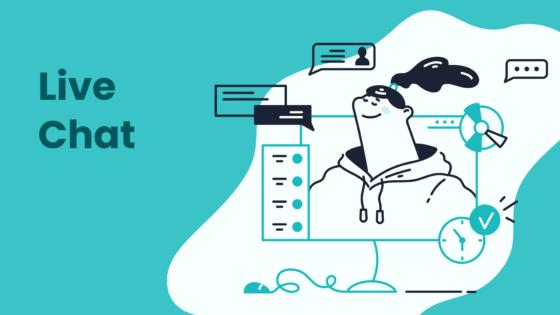
Sobot's Role in Transforming Ecommerce Customer Support

AI has revolutionized ecommerce by enabling businesses to deliver proactive support and personalized experiences. Sobot’s AI-powered solutions, such as Live Chat, play a pivotal role in this transformation. By integrating omnichannel communication, Sobot ensures you can engage with customers seamlessly across platforms like WhatsApp, Instagram, and websites. This approach fosters customer engagement and builds loyalty.
For example, Sobot Live Chat uses predictive analytics to anticipate customer needs. If a shopper abandons their cart, the system can send a personalized message offering assistance or a discount. This strategy reduces cart abandonment rates and boosts conversions. Companies like Michael Kors have seen sales increase by 15-20% through AI-driven product recommendations, demonstrating the power of personalization in ecommerce.
With 24/7 support, Sobot ensures no interaction goes unanswered. Its AI tools also analyze over 150 indicators to optimize workflows, leading to faster response times and higher satisfaction levels. These features make Sobot an essential partner for ecommerce businesses aiming to enhance the customer experience.
AI in Call Centers: Reducing Wait Times and Enhancing Satisfaction
AI has transformed call centers by improving contact center efficiency and reducing wait times. Tools like Sobot’s Voice Call Center use intelligent routing to connect customers with the right agents, ensuring faster resolutions.
Key performance indicators (KPIs) highlight the impact of AI in call centers:
| KPI | Description |
|---|---|
| Service Level | Measures the percentage of calls answered within a predefined timeframe. Industry Standard: The 80/20 rule (80% of calls answered within 20 seconds). |
| Reduce Abandonment Rates | Tracks the percentage of callers who hang up before speaking with an agent. |
| CSAT | Measures customer satisfaction specifically with automated interactions, separate from overall CSAT scores. |
| FCR | Focuses on the percentage of issues resolved in the first interaction through automated systems alone. |
| Call Containment | Refers to the ability of automated systems to resolve customer queries without transferring to a live agent. |
By leveraging AI, you can achieve higher satisfaction levels and improve agent productivity. Real-time insights also allow you to anticipate customer needs, enhancing the overall customer experience.
Success Stories: How OPPO Leveraged Sobot AI for Proactive Support
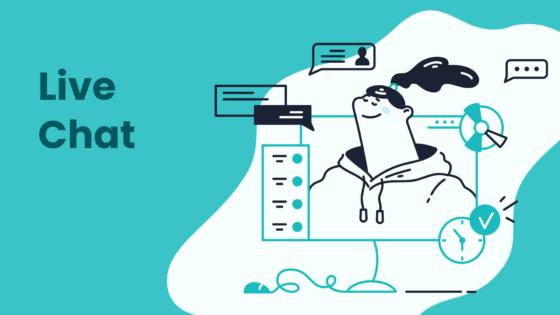
OPPO, a global leader in smart devices, partnered with Sobot to enhance its customer service. During peak shopping periods, OPPO faced a surge in inquiries. By implementing Sobot’s chatbot and ticketing system, OPPO achieved remarkable results.
The chatbot resolved 83% of inquiries, allowing human agents to focus on complex issues. This human-machine collaboration improved efficiency and reduced wait times. Additionally, Sobot optimized OPPO’s knowledge base, cutting maintenance efforts by 90%. These improvements led to a 94% positive feedback rate and a 57% increase in repurchase rates.
This success story demonstrates how AI-powered solutions like Sobot’s can transform customer service. By automating repetitive tasks and providing proactive support, you can enhance customer satisfaction and loyalty.
Steps to Implement AI for Proactive Customer Service
Evaluating Current Customer Support Needs and Gaps
To implement AI effectively, you must first evaluate your current customer support system. This involves identifying gaps and inefficiencies that hinder customer satisfaction. Start by benchmarking your performance against industry standards.
| Benchmarking Method | Purpose |
|---|---|
| Competitive Benchmarking | Compare performance metrics against competitors to identify service gaps. |
| Functional Benchmarking | Evaluate specific functions within customer support to find areas for improvement. |
| Generic Benchmarking | Assess overall industry standards to measure performance against best practices. |
Use these methods to pinpoint areas where your service falls short. For example, if your response times lag behind competitors, AI tools like Sobot Live Chat can help you improve. By analyzing over 150 indicators, Sobot provides actionable insights to optimize workflows and enhance customer interactions. Addressing these gaps ensures a smoother transition to AI-driven solutions.
Selecting the Right AI Tools, Including Sobot Live Chat
Choosing the right AI tools is crucial for success. Look for solutions that align with your business goals and customer needs. Tools like Sobot Live Chat offer omnichannel support, enabling seamless interactions across platforms like WhatsApp, Instagram, and websites.
| Strategy | Description |
|---|---|
| AI for Customer Insights | Automates ticket routing and provides sentiment analysis for effective interactions. |
| Personalization | Unifies customer data to deliver tailored support and proactive outreach. |
| Self-Service Options | Chatbots handle inquiries, offering personalized self-service experiences. |
| Quality Monitoring | Analyzes interactions to maintain service standards and identify areas for improvement. |
| Integration with Human Touch | Balances automation with human interaction for complex issues. |
Sobot’s AI tools excel in these areas. For instance, its predictive analytics anticipate customer needs, while its chatbots provide 24/7 self-service options. These features enhance customer engagement and streamline operations, making Sobot a reliable choice for businesses.
Training Teams to Collaborate with AI Systems
Training your team is essential for maximizing the benefits of AI. Begin by identifying skills gaps and creating tailored training programs. AI can assist by analyzing team performance and suggesting areas for improvement.
| Evidence Type | Description |
|---|---|
| Custom Training Programs | AI identifies skills gaps and creates tailored training experiences. |
| Data-Driven Decision Making | AI integration improves responsiveness to market changes. |
| Enhanced Team Dynamics | AI insights optimize collaboration and productivity. |
For example, Sobot’s AI tools provide real-time insights to support agents during interactions. This ensures a balance between automation and human touch, especially for complex issues. Training your team to use these tools effectively will improve productivity and customer satisfaction. By fostering collaboration between AI and human agents, you can deliver exceptional service.
Measuring Success and Continuously Optimizing AI Solutions
Measuring the success of your AI-driven customer service solutions is essential for continuous improvement. By tracking key performance indicators (KPIs), you can evaluate how well your AI tools meet customer needs and business goals. Metrics like customer satisfaction (CSAT), first response time (FRT), and chatbot resolution rates provide valuable insights into your system's effectiveness.
Key Metrics to Track
- Customer Satisfaction (CSAT): Use surveys to measure how happy customers are with their interactions. A high CSAT score indicates that your AI solutions are meeting expectations.
- First Response Time (FRT): Track how quickly your system responds to inquiries. Faster response times often lead to higher satisfaction.
- Chatbot Resolution Rate: Measure the percentage of issues resolved by your chatbot without human intervention. A high rate shows that your AI is handling inquiries effectively.
- Net Promoter Score (NPS): This metric reveals how likely customers are to recommend your service. A rising NPS indicates growing loyalty.
Tip: Use tools like Sobot Live Chat to monitor these metrics. Its built-in analytics evaluate over 150 indicators, helping you make data-driven decisions.
Continuous Optimization Strategies
Optimization ensures your AI solutions stay effective as customer needs evolve. Regularly update your chatbot's knowledge base to reflect new products or services. Analyze customer feedback to identify areas for improvement. For example, if customers frequently ask the same question, consider adding it to your FAQ section.
Sobot’s AI solutions simplify this process. Its predictive analytics identify trends, allowing you to adjust your strategies proactively. For instance, if data shows a spike in abandoned carts, you can implement targeted outreach campaigns to re-engage customers.
By measuring success and optimizing continuously, you can ensure your AI tools deliver exceptional customer experiences while driving business growth.
AI and automation are reshaping customer service, enabling you to anticipate and exceed customer expectations. By 2030, AI is projected to contribute $15.7 trillion to the global economy, with $6.6 trillion driven by productivity gains and $9.1 trillion from consumption effects. Companies prioritizing AI, like Sobot, are already leveraging these advancements to deliver seamless, proactive support.
| Statistic/Forecast | Value |
|---|---|
| AI's contribution to North America's GDP | 14.5% by 2030 |
| AI's contribution to China's GDP | 26% by 2030 |
| Projected global economic increase | $15.7 trillion by 2030 |
| Productivity enhancement by AI | 40% |
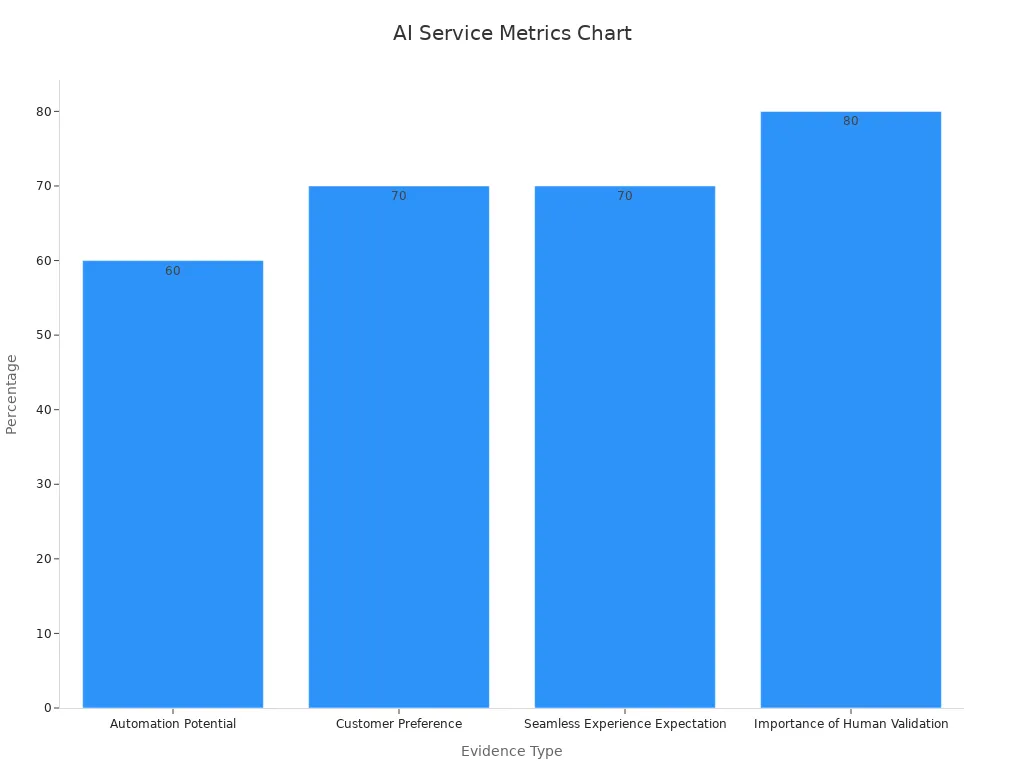
Adopting AI-powered tools, such as Sobot Live Chat, gives you a competitive edge. These solutions automate up to 60% of customer service tasks, meeting the 70% of customers who prefer self-service. The future of customer service lies in leveraging AI to create personalized, proactive experiences that foster loyalty and long-term growth.
Tip: Start integrating AI solutions today to stay ahead in the evolving customer service landscape.
FAQ
What is proactive customer service, and how does AI enhance it?
Proactive customer service anticipates customer needs before they arise. AI enhances it by analyzing data to predict behavior, automate responses, and personalize interactions. For example, Sobot Live Chat uses predictive analytics to identify customer needs, reducing response times and improving satisfaction by up to 38%.
How does Sobot Live Chat improve customer engagement?
Sobot Live Chat supports omnichannel communication, ensuring you never miss a customer interaction. Its AI-powered tools segment customers, automate workflows, and provide real-time assistance. These features boost engagement and loyalty, helping businesses achieve a 38% increase in conversion rates.
Can AI help reduce customer service costs?
Yes, AI automates repetitive tasks, reducing the need for human agents. Sobot’s chatbot system resolves 83% of inquiries without human intervention, cutting costs while maintaining high service quality. This efficiency allows you to allocate resources to more complex customer needs.
How does Sobot ensure data security in AI solutions?
Sobot prioritizes data security with features like GDPR compliance, encryption, and continuous backups. These measures protect customer information while enabling businesses to leverage AI for proactive support. This ensures you can use AI confidently without compromising privacy.
Why is sentiment analysis important in customer service?
Sentiment analysis helps you understand customer emotions during interactions. Sobot’s AI tools analyze text and voice to detect frustration or satisfaction. This insight allows you to adjust responses in real time, improving customer satisfaction by up to 50%.
See Also
Enhancing Efficiency With AI-Driven Customer Service Solutions
Transforming Support Through AI Customer Service Agents
Evaluating AI Solutions For Enterprise Call Centers
